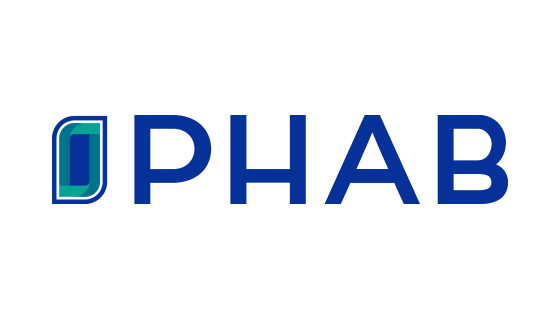Our Work
CWORPH is the home of the nation's first HRSA/CDC Public Health Workforce Research Center and the site of numerous other innovative research projects related to public health workforce.

HRSA/CDC Public Health Workforce Research Center
The Public Health Health Workforce Research Center (PHWRC) is a joint initiative between the U.S. Centers for Disease Control and Prevention (CDC) and Health Services Research Administration (HRSA). This cooperative agreement provides funding over 5 years (2022-2027) for research focused on:
- Evaluating the role(s) of public health occupations in delivering programs, including essential or foundational public health services, across populations.
- Investigating public health workforce composition, data, needs, sufficiency, and distribution including both governmental (i.e., federal, state, local, tribal, territorial) and non-governmental entities.
- Assessing public health workforce development methods including but not limited to recruitment and training models and the outlook and analytics for workforce needs.
- Conducting and evaluating public health workforce implementation scientific research, including identifying evidence-informed strategies and interventions. CWORPH Principal Investigators collaborate with partners to conduct 8-10 studies per year, with guidance and direction from both CDC and HRSA.
Click here to see summaries of Year 1 CWORPH Projects (2022-2023)
Click here to see summaries of Year 2 CWORPH Projects (2023-2024)
The Public Health Workforce Research Center is supported by the Centers for Diseases Control and Prevention (CDC) and the Health Resources and Services Administration (HRSA) of the U.S. Department of Health and Human Services (HHS). This information or content and conclusions are those of the author and should not be construed as the official position or policy of, nor should any endorsements be inferred by CDC, HRSA, HHS or the U.S. Government.
Other Collaborations
The CWORPH PIs have been collaborating on public health workforce products for many years and are involved in a variety of projects in addition to those funded by the PHWRC. Currently they are funded by the Public Health Accreditation Board (PHAB) through a grant from the Centers for Disease Control’s (CDC) Public Health Infrastructure Grant Program for the following studies:
- Conducting an analysis to determine the current size, distribution, and characteristics of the nation’s public health workforce;
- Supporting the creation of a first-in-the nation Public Health Information Data System (PHIDS) under leadership of the Public Health Accreditation Board to make sure that the nation’s public health-related datasets are aligned and able to communicate.
All Products
Public Health Nurses’ Proficiencies and Training Needs in an Emergency Response: A Cross-Sectional Observational Study
To address gaps in understanding the public health nursing workforce regarding competencies recognized as critical during an emergency response.
It Can’t Just Be About the Money: How to Assure an Adequate Public Health Workforce
The COVID-19 pandemic, along with efforts to address systemic racism and social injustice, has required the public health workforce to mobilize an unprecedented and extensive frontline response while simultaneously delivering core services and addressing natural disasters and other emergent threats.
Salary Disparities in Public Health Occupations: Analysis of Federal Data, 2021–2022
To assess salary differences between workers within key public health occupations in local or state government and workers in the same occupations in the private sector.
Standard Occupational Classification Codes: Gaps in Federal Data on the Public Health Workforce
To determine whether US Department of Labor standard occupational classification (SOC) codes can be used for public health workforce research.
Products to Add to CWORPH Website Products to Add to CWORPH Website 100% 10 E6 State Laws Governing the Hiring of Public Health Government Employees, 2023 State Laws Governing the Hiring of Public Health Government Employees, 2023 Turn on screen
Governmental public health agencies have experienced longstanding challenges in recruiting individuals at the state and local level. Understanding civil service laws as they relate to the hiring processes is an important component of recruitment and increasing public health workforce capacity.
Retention of Community Health Workers in the Public Health Workforce: Public Health Workforce Interests and Needs Survey, 2017 and 2021
To investigate the organizational factors contributing to the intent of community health workers (CHWs) to quit their jobs in local and state health departments in the United States.
When Money Is Not Enough: Reimagining Public Health Requires Systematic Solutions To Hiring Barriers
Public health departments in the US have experienced workforce shortages and challenges in recruiting new employees for decades. Reimagining the public health system will require sufficiently staffed health departments.
Federal Student Loan Debt in Public Health and the Opportunities for Loan Repayment Programs
A need persists for graduates with public health training in government public health roles; however, earnings for these positions tend to be lower when compared with earnings for people with undergraduate or graduate training who are working in other sectors, such as private health care or pharmaceuticals.
The Need for Responsive Workforce Development During the Pandemic and Beyond: A Case Study of the Regional Public Health Training Centers
The COVID-19 pandemic underscored the importance of a strong public health infrastructure for protecting and supporting the health of communities. This includes ensuring an adaptive workforce capable of leading through rapidly changing circumstances, communicating effectively, and applying systems thinking to leverage cross-sector partnerships that help promote health equity.
Recruiting New Talent for Public Health Jobs With Evidence-Based Job Descriptions and Attractive Job Postings
With $7.4 billion from the American Rescue Plan funding new hires in the public health workforce, health departments could benefit from well-written, accurate job descriptions and job postings/advertisements to attract candidates.
Trends in Degree Conferrals, Degree-Associated Debt, and Employment Outcomes Among Undergraduate Public Health Degree Graduates, 2001‒2020
To characterize the trends in degree conferrals, degree-associated debt, and employment outcomes among undergraduate public health degree (UGPHD) graduates.
Retention of Community Health Workers in the Public Health Workforce: Public Health Workforce Interests and Needs Survey, 2017 and 2021
To investigate the organizational factors contributing to the intent of community health workers (CHWs) to quit their jobs in local and state health departments in the United States
